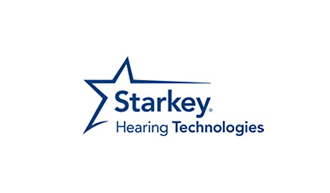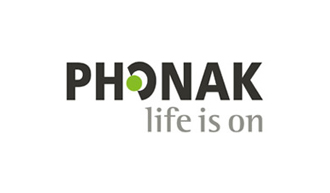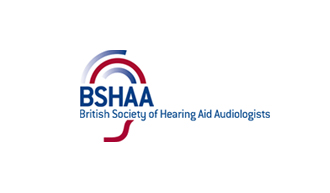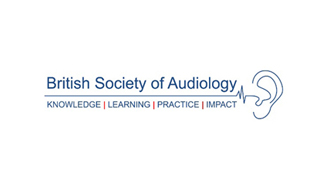Paediatric Audiology
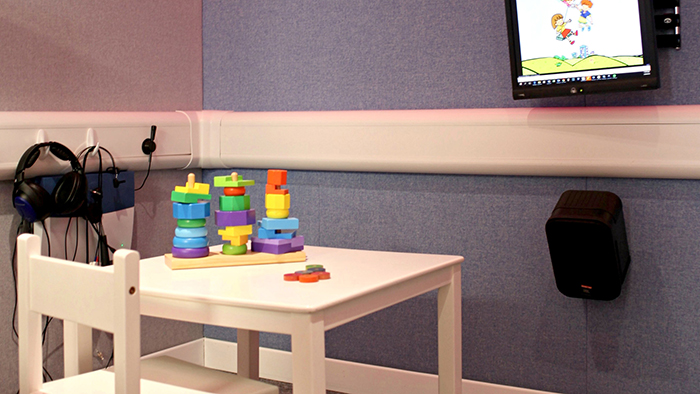
Hearing tests for children
At Pindrop hearing we perform a variety of hearing tests to check your child’s hearing levels. These tests are undertaken in our clinic by our specialist paediatric audiologist who has extensive experience working with children of all ages.
Some of the main tests carried out are described below.
Visual reinforcement audiometry (VRA)
Visual reinforcement audiometry (VRA) is usually used to test hearing in children from about seven months of age up to two-and-a-half years old. During the test, your child will sit on your lap or a chair while sounds are presented. Your baby will be taught to link the sound to a visual reward through a computer screen lighting up. Once your child can associate the sound and the visual reward the volume and pitch of the sound will be varied to determine the quietest sounds your child is able to hear.
Play Audiometry
Children between two and five years old may have a play audiometry test. Sounds will be played through headphones or speakers and your child will be asked to perform a simple task when they hear the sound. This may vary from putting a ball in a bucket to completing a puzzle. Like VRA, the volume and pitch of the sound will be varied to determine the quietest sounds your child is able to hear.
Pure tone audiometry (PTA)
Older children may have a test called pure tone audiometry. This is the test often used to screen a child’s hearing before they start school, when it is sometimes referred to as the “sweep test”. This is similar to a hearing test an adult might have. The sounds are played through headphones and your child is asked to respond when they hear them by pressing a button. By changing the level of the sound, the audiologist can work out the quietest sounds your child can hear. In addition to using speakers or headphones, a small vibrating device called a bone conductor is placed behind the ear. This device passes sound directly to the inner ear through the bones in the head, which can help identify which part of the is responsible for the hearing loss if your child is experiencing hearing problems.
Speech perception test
Speech perception tests are used assess your child’s ability to recognize words. This can be performed in a variety of ways depending on your child’s age and ability. Some may be performed using voice and others may involve playing speech through headphones or a speaker. The child may need to identify words they hear by pointing at a toy, picture, or repeating what they hear.
Tympanometry
Tympanometry is a test to assess how flexible the eardrum is. For good hearing, your eardrum needs to be flexible to allow sound to pass through it. If the eardrum is too rigid – for example, because there is fluid behind it (glue ear) – sounds will bounce back off the eardrum instead of passing through it, which results in hearing difficulties. During the test, a soft tube is placed at the entrance of your child’s ear. Air is gently blown down the tube and a sound is played through a small speaker inside it. The tube then measures the sound that’s bounced back from the ear.
Otoacoustic emissions tests (OAE)
A small earpiece which makes clicking sounds is placed into your child’s ear canals. These clicking sounds are picked up by the inner ear also known as the cochlea. If the cochlea is working normally, it responds by sending a sound back to the ear canal which is recorded by the earpiece. This test is extremely sensitive so that even the slightest hearing loss can be detected.
Causes of hearing problems in children
There are several reasons why your child may have a hearing problem, including temporary hearing loss from a common illness such as a cold.
Some possible causes of hearing loss that may be detected during our hearing assessments include:
- glue ear – a build-up of fluid in the middle ear, which is common in young children
- infections that develop in the womb or at birth which can cause progressive hearing loss
- inherited conditions (congenital), such as otosclerosis.
- damage to the cochlear or auditory nerves which could be as a result of severe head injury, exposure to loud noise or head surgery.
- illnesses such as meningitis and encephalitis.
- Spotting signs of a hearing problem
Signs of a possible hearing problem in children can include:
- inattentiveness or poor concentration
- not responding when called
- talking loudly and listening to the television at a higher volume
- difficulty pinpointing where a sound is coming from
- mispronouncing words
- speech delay/difficulty
- a change in their progress at school
Hearing Aid Manufacturers
At Pindrop Hearing w e are authorised independent providers for all of the world’s leading hearing aid manufacturers.
Memberships
Pindrop Hearing are members of multiple professional bodies and associations within Audiology.
Contact Us
Contact Form
Locations
Harley Street
41 Harley Street,
London W1G 8QH
0207 487 2660
Winchmore Hill
748 Green Lanes, Winchmore Hill, London N21 3RE
0208 360 2510
Chelsea Outpatients Centre
280 Kings Road Chelsea,
London SW3 5AW
Spire Bushey Hospital
Healthbourne Road, Bushey
Herts, WD23 1RD
Quick Links
Pindrop Hearing Limited is registered in England and Wales No 05909296 Trading address 41 Harley Street, London, W1G8QH. Pindrop Hearing Limited acts as a credit broker and only offers credit products from Duologi.
Pindrop Hearing Limited is authorised and regulated by the Financial Conduct Authority. Our registered number is 796909. Credit subject to age and status.



